The milky latex bled from the Mexican rain forest tree as Alfredo Rodriguez Arzate swung his machete, climbing the trunk with a rope around his waist and spurs on his boots.
Built like a featherweight boxer, the mustachioed 50-year-old tree climber was careful not to make a wrong move, like accidentally slashing the rope, which could have sent him into a bone-breaking fall.
“You can’t make a mistake in this line of work,” Rodriguez said as he hacked off bark about 7m above the jungle floor, creating a zigzagging trail for the chicle resin to run down the trunk and into a bag.
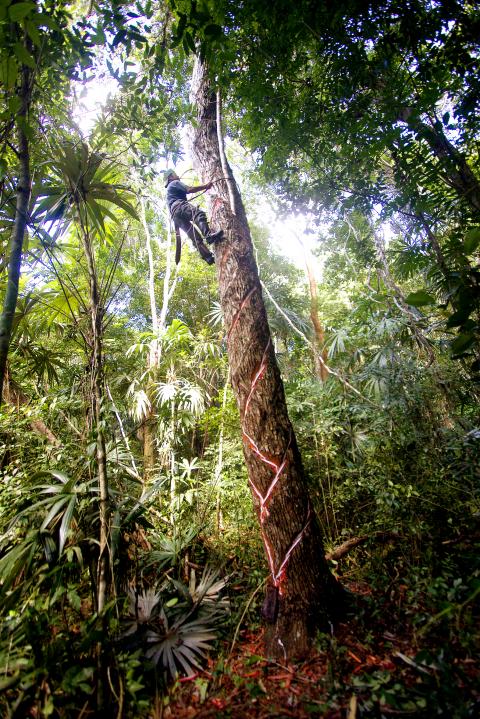
Photo: AFP
This is a risk taken by chicleros since the late 19th century to extract the original ingredient for chewing gum from the sapodilla tree, which has been harvested since the ancient Maya ruled the southeastern Yucatan Peninsula.
The men who dodge poisonous snakes, run into jaguars and climb 30m-high trees nearly met their demise when US gum makers switched to synthetic ingredients following World War II.
However, like the sapodilla trees, which can live for hundreds of years, the chicleros have stuck around and made a comeback thanks to Asia’s continuing appetite for chicle and soaring demand for the real thing in Europe.
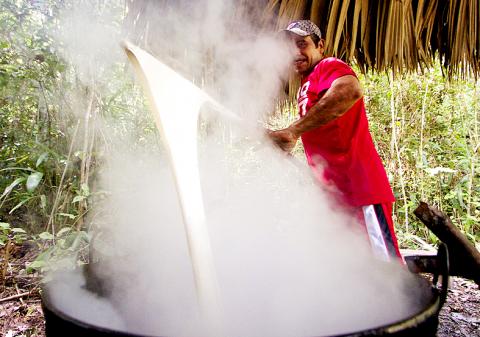
Photo: AFP
For the past three years, chicleros have produced their own organic chewing gum, selling mint, spearmint, lime and cinnamon flavors in more than 15 nations, mostly in Europe, but also in Australia and Israel, under the brand name “Chicza.” Japan still imports chicle to make gum.
The Consorcio Chiclero, a company that groups 56 chiclero cooperatives, says chicle sales have jumped 47 percent, from US$1.2 million last year to US$1.8 million this year.
“If you chew Chicza, you bring the jungle to your mouth, and you also contribute to conservation,” Consorcio Chiclero director Manuel Aldrete Terrazas said, adding that the business is an incentive to keep trees standing.
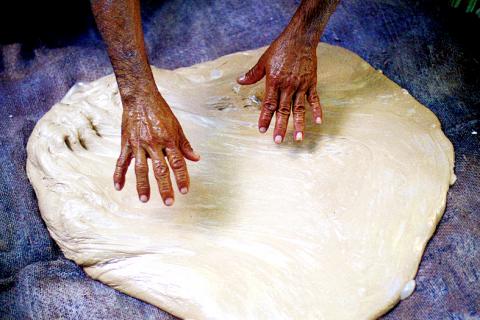
Photo: AFP
Emily Segal, director of the Australian firm Organic Imports, said sales have kept growing since she first imported Chicza six months ago, spreading to a network of 3,000 organic stores and independent supermarkets.
“Upon first chew, we loved the texture and flavor of the gum and were so impressed with the pure ingredients we realized that this was something the Australian market was crying out for,” she said.
The Mayas and the Aztecs are believed to have chewed chicle to clean their teeth and stave off hunger, though historians say they likely used different techniques to extract the resin from the sapodilla (also called chico zapote) tree and make gum.
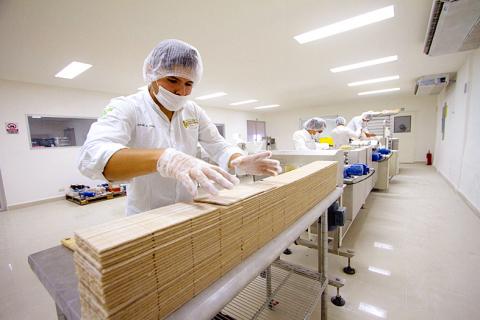
Photo: AFP
The modern chewing gum was created by US scientist Thomas Adams in the 19th century after former Mexican leader Antonio Lopez de Santa Anna introduced him to chicle, hoping to export it as an alternative to rubber.
Since chicle failed as a rubber substitute, Adams decided to turn it into chewing gum, said Jennifer Mathews, author of Chicle. The Chewing Gum of the Americas: From the Ancient Maya to William Wrigley.
Chicle’s heyday was during World War II, when US soldiers distributed sticks of gum across the world. There were 20,000 chicleros and 5,000 tonnes of chicle produced per season at the time.
Its decline came when US companies switched to synthetic ingredients.
“It was basically abandoned by the 1970s,” Mathews said.
The Consorcio Chiclero was created to save the industry after bad management nearly ended chicle production in the early 1990s, with only 1,000 chicleros still climbing trees.
Today about 2,000 chicleros live in small villages like Tres Garantias, a collection of modest wooden homes whose 800 residents mostly live off forestry and chicle.
The chicleros climb several trees in a day and wait hours for the latex to fill a bag at the foot of the tree, producing up to 200 tonnes of chicle per year.
After a tree is sliced, it takes seven years to heal and be ready for harvesting again during the rainy season, between August and February.
“It is the cycle of life,” said Raymundo Terron Santana, the gray-bearded 68-year-old president of the Tres Garantias chiclero cooperative.
“When a woman gives birth, she is in pain, and when the chico zapote gives resin, it is also in pain when a chiclero slices it,” he said.
After rappelling from the tree, Rodriguez headed to a jungle camp used by the chicleros to ferment the stuff over a wood fire.
He poured a large quantity of the white chicle into a cauldron and cooked it for four hours, stirring the whole time as blue butterflies flew by and howler monkeys growled in the distance.
After taking it out of the fire and stirring some more to cool the chicle, he poured it onto a cloth and molded it into a brick, ready to be sent to the Consorcio’s small chewing gum factory.
Rodriguez made 13kg of chicle, earning 810 pesos (US$62) for two days’ work, compared with the 100 pesos he can make working in the fields.
“I get to live together with nature and make money for my family,” he said.
He has climbed sapodilla trees since he was 15 years old, falling twice. Seven years ago, he broke a rib and suffered deviated discs in his spinal column. The injury sidelined him, but he is climbing again.
“God has other plans for me,” he said.

Real estate agent and property developer JSL Construction & Development Co (愛山林) led the average compensation rankings among companies listed on the Taiwan Stock Exchange (TWSE) last year, while contract chipmaker Taiwan Semiconductor Manufacturing Co (TSMC, 台積電) finished 14th. JSL Construction paid its employees total average compensation of NT$4.78 million (US$159,701), down 13.5 percent from a year earlier, but still ahead of the most profitable listed tech giants, including TSMC, TWSE data showed. Last year, the average compensation (which includes salary, overtime, bonuses and allowances) paid by TSMC rose 21.6 percent to reach about NT$3.33 million, lifting its ranking by 10 notches

Popular vape brands such as Geek Bar might get more expensive in the US — if you can find them at all. Shipments of vapes from China to the US ground to a near halt last month from a year ago, official data showed, hit by US President Donald Trump’s tariffs and a crackdown on unauthorized e-cigarettes in the world’s biggest market for smoking alternatives. That includes Geek Bar, a brand of flavored vapes that is not authorized to sell in the US, but which had been widely available due to porous import controls. One retailer, who asked not to be named, because
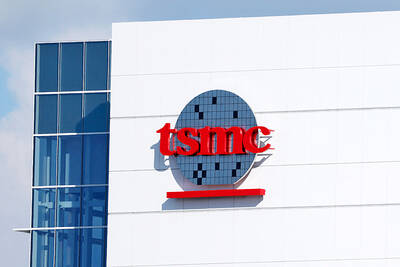
SEASONAL WEAKNESS: The combined revenue of the top 10 foundries fell 5.4%, but rush orders and China’s subsidies partially offset slowing demand Taiwan Semiconductor Manufacturing Co (TSMC, 台積電) further solidified its dominance in the global wafer foundry business in the first quarter of this year, remaining far ahead of its closest rival, Samsung Electronics Co, TrendForce Corp (集邦科技) said yesterday. TSMC posted US$25.52 billion in sales in the January-to-March period, down 5 percent from the previous quarter, but its market share rose from 67.1 percent the previous quarter to 67.6 percent, TrendForce said in a report. While smartphone-related wafer shipments declined in the first quarter due to seasonal factors, solid demand for artificial intelligence (AI) and high-performance computing (HPC) devices and urgent TV-related orders
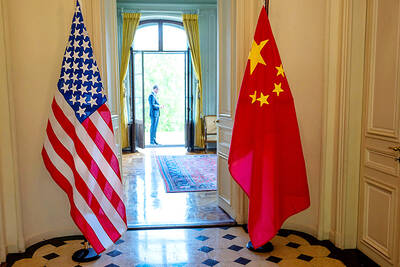
MINERAL DIPLOMACY: The Chinese commerce ministry said it approved applications for the export of rare earths in a move that could help ease US-China trade tensions Chinese Vice Premier He Lifeng (何立峰) is today to meet a US delegation for talks in the UK, Beijing announced on Saturday amid a fragile truce in the trade dispute between the two powers. He is to visit the UK from yesterday to Friday at the invitation of the British government, the Chinese Ministry of Foreign Affairs said in a statement. He and US representatives are to cochair the first meeting of the US-China economic and trade consultation mechanism, it said. US President Donald Trump on Friday announced that a new round of trade talks with China would start in London beginning today,